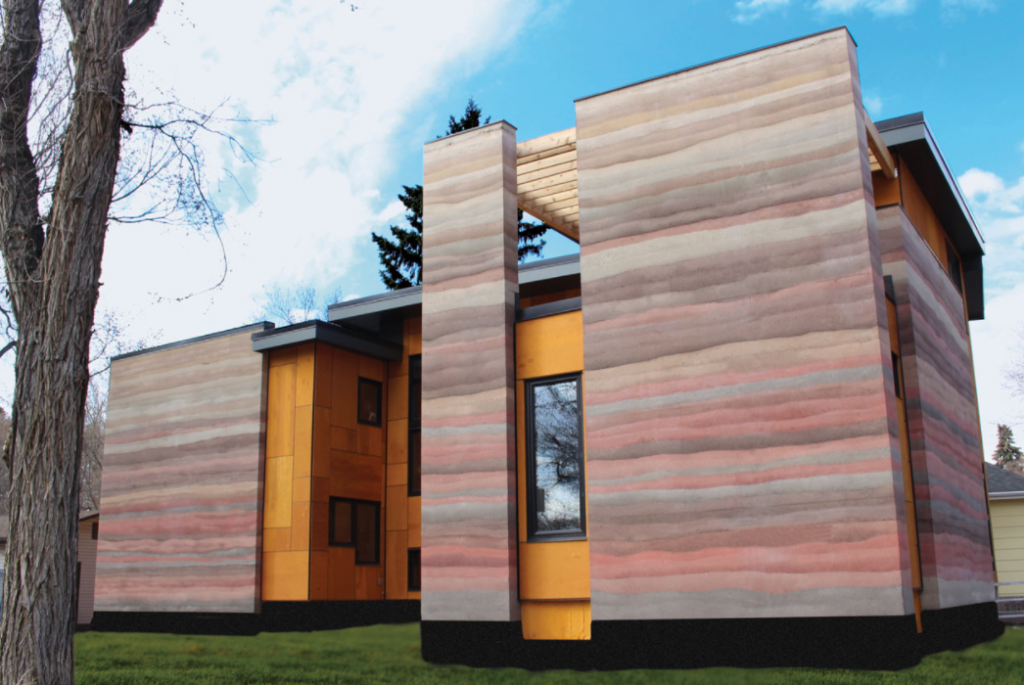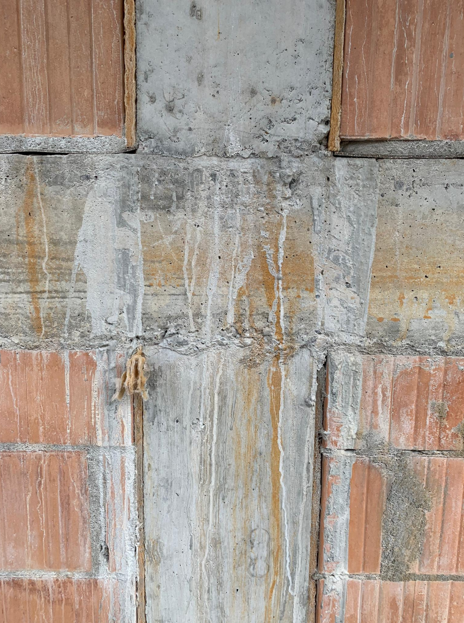Climate change has been on everyone’s lips for some time. It is clear that measures must be taken to slow down global warming. An important part of the change must happen in the building industry, because it has a direct impact on our environment.
In Switzerland, over 7 million tons of energy are used each year just for building material. There is still a lot of room for improvement. Therefore, we have set ourselves the goal to investigate this part of the building industry with our project. In cooperation with an expert, we have clarified the question: Which building material is optimal for the climate and the environment.
After narrowing down the building materials we were investigating, we had to find a way to evaluate these building materials in a meaningful way. First, we tried to find important criteria for environmental impact. We found some, but few have the possibility to be measured in a meaningful way.
Measuring Method
Through the exchange with our expert, we decided to limit ourselves to the so-called “UBP”. “UBP” (german for Umweltbelastungspunkte: wikipedia.org) stands for environmental impact points. With this number it is possible to compare building materials.
The UBP measures the environmental impact of different building materials. The UBP contains the impact of the consumed energy and material resources, of land and water, of emissions to air, water and soil, and of the deposition of residues from waste disposal and traffic noise. In addition, the recycling of the substance is also taken into account in this figure. The advantage of this method is that it assigns a meaningful weighting to all the points mentioned, which makes the figure very informative.
Building materials
According to our research for the project, we compiled a list of materials that we wanted to compare. However, through consultation with an expert, it became apparent that certain materials were unsuitable for our comparison methods. So, in cooperation with the expert, we limited ourselves to the following materials:

Consumes very little primary energy in extraction and transportation. It is also easily reused after demolition. [2]

requires time-consuming and precise preparation, but they are versatile. However, it is very static, so it can quickly crack. [3]

are easy to apply and provide good protection against fires and water. That is why this building material was often used in industrial buildings. [4]

Conrete is the most popular building material of modern times. It is ideally suited for residential builidings due to its good sound insulation and fire protection. However, conrete is susceptible to mold in case of insufficient ventilation. [5]

is a special building material. It does not have the robust properties of the other materials, but it is visually appealing. A big disadvantage is the permerability. In summer, a lot of heat is let in, and in winter you lose heat. [6]
Interpretation
Now we come to the results from our project. First, we compared the green house gas emissions of the building materials. These already give an informative picture of the environmental impact of different building materials. It is important to emphasise that the Greenhouse gas emissions are included in the eco-points.

If we now look at the diagram with the UBP comparison, a very similar picture emerges. The more natural the building materials are, the more environmentally friendly they are. A particularly good example is rammed earth. Rammed earth was used as a building material early on because its extraction is very simple and requires very little energy.


Calculation
1000 kg of concrete correspond to 348,000 UBP whereas 1000 kg of rammed earth correspond to only 39,400 UBP. The difference of 308’600 corresponds to a journey of about 7’400 kilometres by train (1000 UBP are 24 kilometres). The rail distance between Zurich and Geneva is 224 kilometres (7400 kilometres divided by 224 kilometres equals 30 times the length of the line).
Our Recommendation
Considering our results, we recommend using building materials that are as natural as possible. We know that each building project has to be considered individually to take into account factors such as location, budget, temperature, preferences, etc. Therefore, for practical reasons, materials such as concrete are often used. However, we recommend that one should always consider whether it is possible to use natural materials. Not only do they help to protect our environment, but they also offer a pleasant change from conventional materials.
Conclusion
During this project we learned a lot about the importance of building materials. They have a big impact on the buildings but also on the environment. Our calculations showed that flat glass has the worst influence to the environment considering manufacturing and disposal. By using other building materials we can safe masses of energy for other things.
We also realised how difficult it is to make environmentally friendly adjustments, as there are many individual variables in a building project. However, we are convinced that in the future, more use will be made of environmentally friendly materials such as rammed earth, and thus great savings can be made.
Authors: Justin Valiyaveettil, Dario Di Fazio
Sources
[1] Building Material Energy Consumption (empa.ch)
[2] Rammed Earth (wikipedia.org)
[3] Cement Stone (cdn.net)
[4] Bricks (immodirekt.at)
[5] Concrete (allplan.com)
[6] Flat Glass (wohnsauber.com)
[7] Life cycle assessment (kbob.admin.ch)
[8] meaning of UBP (carbotech.ch)
Picture Sources
Rammed Earth (rammedearthartisan.com)
others: Self-made
Other interesting posts:
Neophytes
City Traffic in Zurich
Urban Gardening
☷ See the project teams here »
☵ Some words about the contributions »
☴ Our sponsors and partners » (the-horse.education)

This article brings up a really interesting point about the environmental impact of building materials. I definitely hadn’t considered the environmental cost of different materials before. The idea of using natural materials like rammed earth is fascinating, and it seems like a great way to reduce greenhouse gas emissions.
However, the article also mentions that natural materials might not always be feasible due to cost. I’d love to hear your thoughts on this a bit more. Do you think there are ways to make sustainable building materials more affordable in the future? Perhaps through advancements in technology or government incentives?
Mitch Monroe, Las Vegas Foundations (vegasfoundations.com),
Repair Company in Las Vegas
Dear Justin and Dario
I‘ve just read your post and think you did a really great job their.
The information you‘ve provided is interesting and eventough it is a quite complicated topic, you‘ve managed to explain it in an understandable way, so that everyone is able to understand what you wanted to tell us.
The calculations helped me to compare the different materials because I couldn‘t image how good/bad the different materials are, until I saw the numbers.
Kind regards, Leandro
Very well written! I really like the way you structured the texts. It’s also very interesting. The calculations were especially interesting and very surprising. I enjoyed reading your post.
Livia